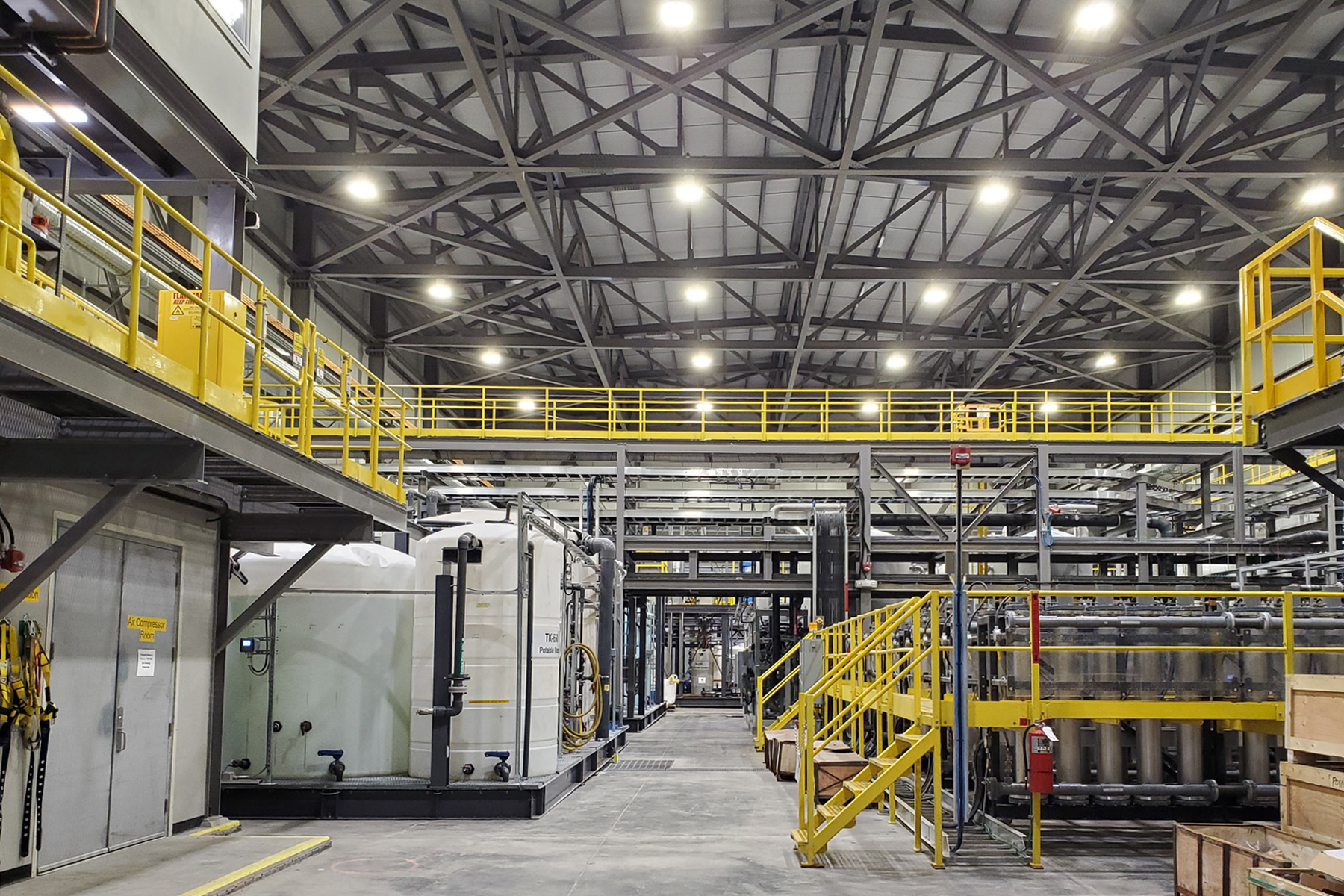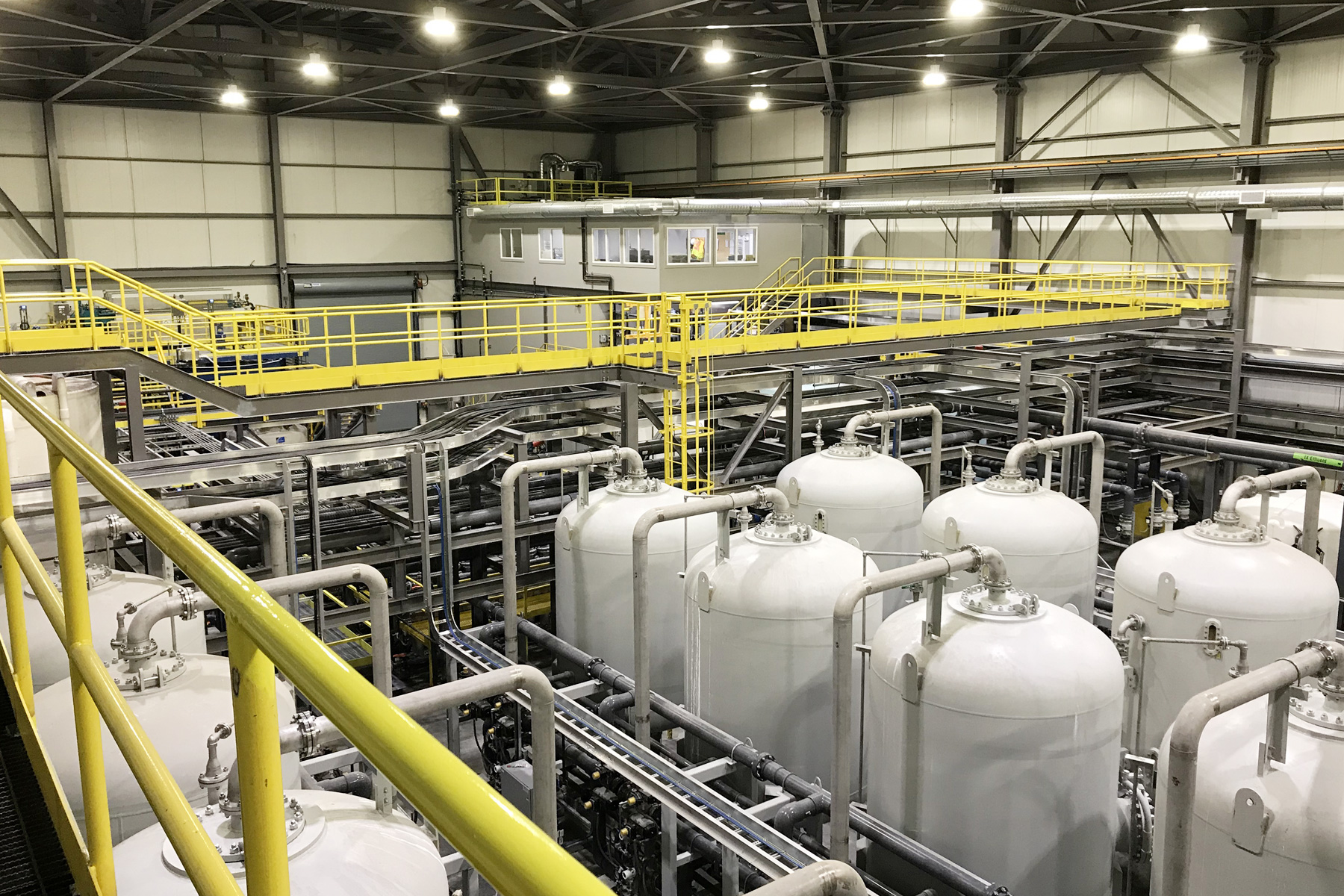Kemess Selen-IX™ Plant for Selenium Removal

Projects Sponsor
Raising a glass to BQE Water & the Kemess Selen-IX™ Mining Wastewater Selenium Removal Plant.
At a remote mine site in Northern BC sits the Kemess Selen-IX™ Plant for selenium removal. As the first full-scale water treatment plant to utilize a non-biological treatment system, the plant achieves results other systems cannot.
Selenium, in trace amounts, is essential to all life forms, but at high concentrations, it is harmful to fish populations and contaminates drinking water. Selenium enters water through the weathering of plant life, soils and bedrocks, but industrial activities, such as mining, accelerate selenium release into water. These concerns have led North American regulatory agencies to enact selenium discharge limits ranging from one to ten parts per billion.
These environmental discharge regulations for water quality are tied to mining permits. They’re part of the job and Centerra Gold, a Canadian-based gold mining and exploration company, contracted BQE Water, a service provider specializing in water treatment and management, to remove selenium from mining wastewater.

The key objectives of the project were to meet end-of-pipe selenium limits of less than two parts per billion without reliance on dilution and the production of a stable and non-toxic solid residue that satisfies criteria for onsite disposal. It was also imperative that the company be able to start up seasonal operations quickly in the spring and put the plant to bed for the winter without impacting its availability in the following treatment season
Biological systems leave all these boxes unticked. They cannot reliably reach selenium discharge limits of even less than ten parts per billion. They require dilution, produce sludge waste with unknown long-term stability, and, by their very nature, have uncontrolled rates of processing that makes them unsuitable for operations requiring fast start up and shut down.
Fortunately, Centerra Gold was open to adopting innovation to achieve better outcomes for water treatment, and they’d come to the right service provider.
BQE Water’s Selen-IX™ process––a non-biological technology that disrupts the selenium treatment space that was dominated by biological systems––on the other hand, effectively meets all Centerra Gold needs. After all, that’s what BQE Water painstakingly designed it to do.
Research and development, entailing multiple phases of laboratory-scale studies, continuous pilot testing and an industrial demonstration were undertaken to develop the Selen-IX™ process technology that is utilized in the project.

Selen-IX™ involves the unique integration of ion exchange resins and electrochemical cells to remove selenium from wastewater
Once laboratory testing confirmed that combining ion exchange and electrochemistry together could remove selenium, the BQE Water team built a mobile pilot plant to complete larger-scale testing on mine water containing varying concentrations of selenium.
The pilot project produced treated water with less than five parts per billion of selenium, sending BQE Water back to the lab to research how that removal rate could be improved upon. More pilot projects followed, as the team progressively improved upon the process, producing new efficiencies that had the positive impact of reducing capital and operating costs.
When technology reviewers identified engineering scale-up of the electrochemical cell as a technical risk, BQE Water completed an industrial demonstration using a cell of the same size as a full-scale plant. Operated for two months on multiple water compositions under conditions expected in full-scale plants, they achieved results that matched the performance expected from the pilot projects.

Once findings from the industrial demonstration were finalized, Centerra Gold made the decision to proceed with a full-scale plant.
A phased implementation approach began, ending with the commissioning and start-up of the plant, which is already setting a new standard in the industry.
In addition to meeting all the initial, ambitious, objectives, BQE Water’s Selen-IX™ has realized multiple other benefits. The selenium is removed without transforming it into a more toxic form of selenium and no chemicals or contaminants to the treated water not previously present are added. The treatment process not only adjusts rapidly to fluctuations in feed water flow and composition, its efficiency is not impacted by cold water temperatures.
It’s a made-in-Canada innovation that will work at home in Canada, and beyond, changing the game everywhere it flows.













